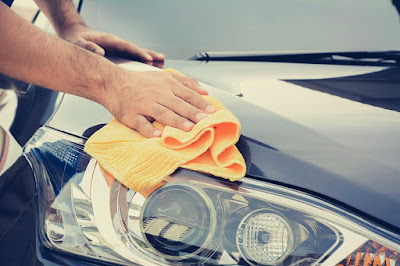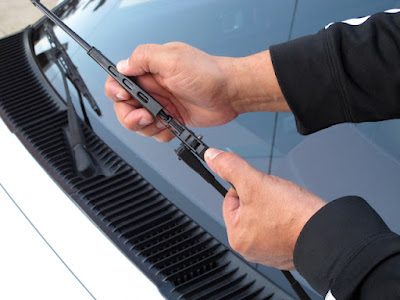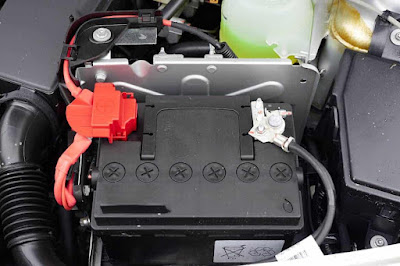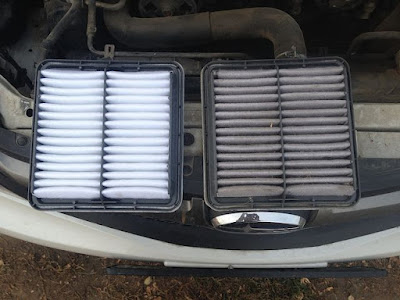Timing is everything. For jokes, music, cooking, dating - even engines! The motor of your car depends on a timing belt to stay synchronised. The timing belt ensures that your engine runs smoothly, keeping you safe on the road. Changing the timing belt is a vital service component! Therefore, if you own a car, you should understand how a timing belt works.
What's a timing belt for?
Think of your car's timing belt like a bike chain - it keeps all the internal moving parts of an engine in sync. It also occasionally powers the water pump, oil pump and injection pump.
A timing belt is typically made out of rubber with high tensile fibres over the entire length of the belt as tensioning elements. It's a rubber belt with hard teeth that fit together with the gears on the crankshaft and camshafts.
It synchronises the displacement of the crankshaft and camshafts. If the crankshaft and camshafts do not operate the same way, the vehicle will not function correctly.
If the crankshaft and camshafts do not work the same way, the car will not function properly.
When to replace your timing belt?
It's crucial to replace your timing belt at the mileage intervals your vehicle manufacturer recommends. Every manufacturer is unique.
A glance at the owner's manual tells you that you have to replace the timing belt every 150,000 km. However, this differs between the vehicle business model. When you look at the odometer, it strikes at 149,000 km.
This is an indication of the mileage or the elapsed time. You don't get an advanced warning that your timing belt is on the verge of failure. Replace the timing belt as per the manufacturer's recommended schedule. Don't gamble on that. If you're still confused, ask a professional!
Anyone with a car having a timing belt should put a sticker on their engine. This sticker should advise them when the timing belt is due for a replacement. As a result, the sticker is a reminder to change your timing belt within the appropriate and predetermined mileage and time interval.
How to carry out a timing belt replacement by yourself
The following is an overall step-by-step procedure to install the timing belts. Please note this is a general guideline. Carefully check the car manufacturer's instructions or ask a professional!
Step 1 - Ensure your vehicle's timing marks are correctly aligned in the following ways:
• With your crankshaft pointed to the top dead centre (TDC)
• With your distributor rotor aligned with the timing mark on the distributor housing
• With your camshaft pulley timing pointer aligned with the engine console
Step 2 - Carefully place the new timing belt over the pulleys, whilst being careful not to force it on.
Step 3 - Loosen the tension adjustment bolts freely so that they can swing back against the belt. Do not allow it to 'strike' the strap. Verify that the tension spring is correctly engaged.
Step 4 (optional) - If a spring tension is not available, tighten the belt as recommended by the vehicle manufacturer.
Step 5 - Carefully rotate your crankshaft (in the direction of rotation) for at least two spins to remove any slack in the belt. This allows the belt tines to sit perfectly in the grooves of the pulley.
Step 6 - Loosen the tension and tighten the belt according to the recommendations made by the vehicle manufacturer. When the drive is in understanding with a fixed tension, verify the voltage using a voltage tester. Torque the tension adjustment and pivot bolts to the manufacturer's recommended torque setting.
Step 7 - Replace any parts that have decayed. Replace the distributor belt cover. Ensure all the bolts are enhanced by following the manufacturer's recommended torque settings.
Step 8 - Reconnect the battery ground cable.
Step 9 - Start the engine, check the ignition setting and make the necessary adjustments.
Here's a nifty bonus tip - change the timing belt every 5 to 10 years. Now, if all this sounds rather daunting, entrust the services of your resident auto repair experts at Service My Car. If you want more services as well, like Ferrari Repair in Abu Dhabi or other services then you can check all services on our website or app.
Getting a timing belt replacement has never been easier. Get your instant quote today on our website or on the Service My Car app.
















